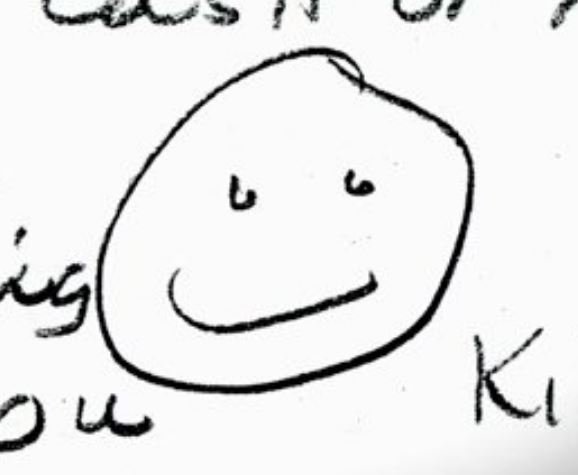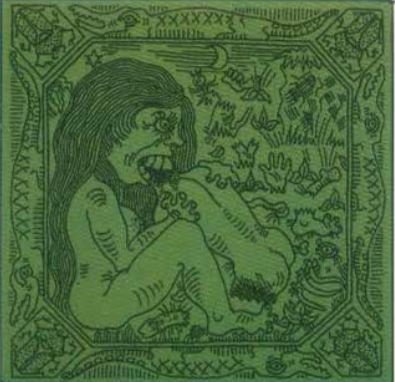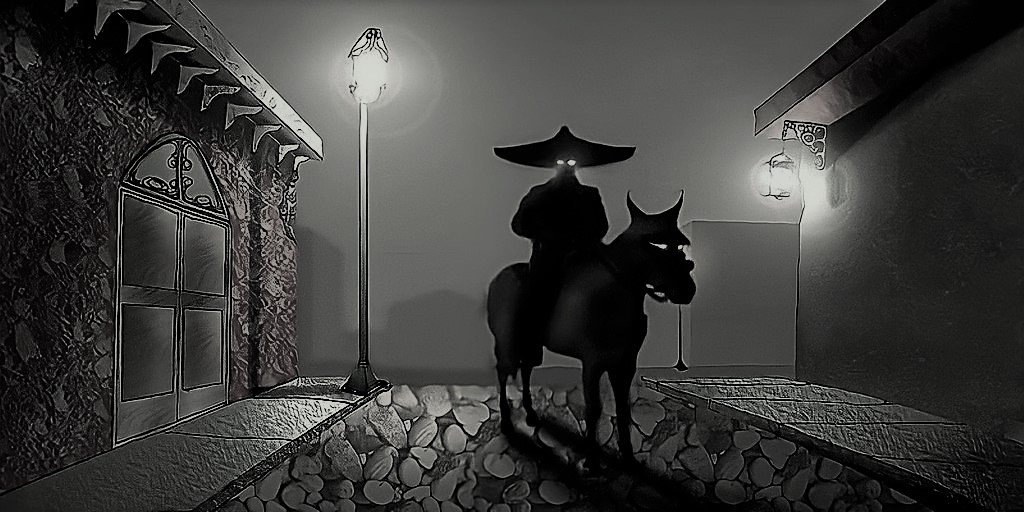Who Was the Happy Face Killer?
In early 1990 police in Oregon were investigating the tragic and brutal murder of a 23-year-old woman named Taunja Bennet. Her body had been discovered by a highway on the Columbia River Gorge in late January and police had been unable to obtain any leads on who could have murdered her.
Just as the case was going cold, police received an anonymous tip pointing them to a man who had bragged about committing the murder. For police, it was the break they needed that eventually, they hoped, would lead to an arrest and conviction.
But the case would have more twists and turns including a message written in two bathroom bus depots by an unknown third person claiming to be the real killer. Both messages were signed with a happy face and it wasn’t the last time this mysterious person would claim to be the one responsible for a string of murders.
PART 1 - The Murder Investigation of Taunja Bennet
In late January 1990, a student of the nearby Mt. Hood Community College spotted the half-naked body of Taunja Bennet off of a highway near Portland, Oregon. Investigators quickly determined she had been raped and strangled to death. Their investigation led them to several bars and restaurants Taunja was known to frequent but they continuously came up with dead ends.
After several days of media coverage and newspaper articles asking for any information on the case, the police received an anonymous tip pointing to a 39-year-old man named John Sosnovske who had apparently been bragging about murdering Bennet. At first, nothing came from the tips and it wasn’t clear if they even reached the ears of the lead detectives on the case.
The person leaving those anonymous tips eventually called the lead detectives herself and revealed herself to be 57-year-old Laverne Pavlinac, the long-time girlfriend of John Sosnovske. Laverne told the police John had bragged to her about killing Taunja and admitted he had accidentally strangled her in a fit of rage.
Laverne Pavlinac and John Sosnovske
Further boosting her credibility was Laverne’s claim that she found Taunja’s purse and a ripped piece of her jeans in the trunk of her own car that John had borrowed. Investigators worked to match the purse and ripped clothing to Taunja but when it came up inconclusive they questioned Laverne further, wondering if she was fabricating evidence.
Laverne denied the claim and then admitted to having helped John dump Taunja’s body after he threatened to hurt her family if she didn’t assist. She then agreed to help detectives obtain a confession from John by wearing a wire and attempting to get him to admit to the murder.
Despite John not admitting to the crime on tape, police picked him up and questioned him. Still, he denied any involvement in Taunja’s murder but after Laverne showed detectives the area where John dumped Taunja’s body, both Laverne Pavlinac and John Sosnovske were arrested for murder.
The two were to be tried separately in court with Laverne being first, charged with aiding in the murder but before the trial started Laverne told a different story. She now claimed she made the entire thing up.
She told detectives John was physically abusive towards her and wanted to escape the relationship, hoping him being arrested for murder would be a way out. What she didn’t expect was for her to be arrested as well after her story spiraled and she incriminated herself.
It turned out Laverne had seen the news reports and read all the articles she could find on the case in order to concoct a plausible story. When she took the police to the place where John allegedly dumped the body, she already knew the general vicinity where Taunja was found and all she had to do was look for an area that looked like the police had investigated prior.
During the course of the investigation into Laverne’s claim, there were already red flags that were seemingly ignored by detectives. Witnesses who saw Taunja on the night she was killed spotted her with two unidentified men, neither of which was John. Other witnesses spotted John in a bar 25 miles away at the same time.
When Laverne showed the detectives the area where Taunja was found, she was unable to point out where other evidence was found in the same area. It was also revealed Laverne had a habit of reporting John to the police for crimes he didn’t commit. The year prior she had even contacted the FBI to accuse John of being a bank robber and when they cleared him she attempted to report him to the local police.
Finally, as Laverne’s trial began the police found a message written on a bathroom wall in a Greyhound bus depot in Montana stating, “I killed Taunja Bennett January 21, 1990, in Portland Oregon. I beat her to death, raped her, and loved it. I’m sick but I enjoy myself too. Two people took the blame and I’m free,”
The message was signed with a happy face and nothing else.
A few days later in Oregon, they found another message written on another bathroom wall stating, “I killed Taunja Bennett in Portland. Two people got the blame so I can kill again,” Once again the message was signed with a simple happy face.
Despite all of this and Laverne redacting her confession, the police still believed her and John to be the killers and the jury agreed. In 1991 Laverne was found guilty of felony murder and sentenced to a minimum of ten years in prison.
In an attempt to avoid the death penalty, John Sosnovske pleaded no contest to the charges and was sentenced to life in prison. Meanwhile, the man who actually killed Taunja Bennett and wrote the messages on the bathroom stalls would become the serial killer known as The Happy Face Killer.
PART 2 - The Happy Face Killer
On January 21st, 1990 Taunja Bennett was out having a few drinks at a local bar when she was approached by 35-year-old Keith Hunter Jesperson. The two seemingly hit it off with Keith inviting Taunja to a home he was renting nearby.
At some point during the night the two got into a heated argument and the 6 foot 6, 240-pound Keith brutally beat Taunja unconscious. Worried about what would happen when she awoke, he chose to strangle her to death.
Keith then left her body for several hours in order to create an alibi by going back to the bar and starting conversations with various other people. When he returned home he took her body to the Columbia River Gorge to dispose of it and threw her items including a Walkman and purse in other areas so they wouldn’t be found.
Keith Hunter Jesperson then returned to his job as an interstate truck driver and after Laverne Pavlinac and John Sosnovske were arrested for the murder, he now knew he could kill again. His preference for victims made it difficult for investigators to connect the murders as Keith often chose to kill prostitutes he found along the interstate across the country.
His next confirmed murder occurred a year and a half later in the summer of 1992 in Blythe, California where he raped and strangled a woman who is still unidentified today though Keith claimed her name was Claudia.
In September of 1992, the body of Cynthia Lyn Rose was found strangled in Turlock, California. In November of 1992, the body of Laurie Ann Pentland was found in Salem, Oregon. In July of 1993, another unidentified victim was found in Santa Nella, California, police first listed her cause of death as a drug overdose. The following year in September Keith killed yet another unidentified woman who Keith claimed was named Susanne in Crestview, Florida.
At this point, Keith either began to feel remorse or wanted to taunt the police and newspapers about his murders. He sent anonymous letters to the Oregonian newspaper where he admitted to killing the six women. In his letters, he stated he felt he deserved to be killed for the murders yet ended the letters taunting the reader by stating, “Look over your shoulder. I’m closer than you think.”
At the bottom of his letters, he ominously signed them with a happy face.
In January of 1995, Keith offered to give 21-year-old Angela Surbrize a ride from Spokane, Washington to Fort Collins, Colorado to visit her father. This was the last time Angela Surbrize was seen alive.
Two months later in Washington on March 10th, Keith made a costly mistake by losing his temper and killing 41-year-old Julie Ann Winningham. He then disposed of her body alongside a highway where she was found several days later.
It would be this final murder that would lead police directly to Keith since Julie wasn’t a stranger to Keith, in fact, she was his fiancé and her friends and family were able to give investigators all of his information.
Police learned Keith was born on April 6th, 1955 in British Columbia, he had been married once before and had three children. Prior to getting a job as an interstate truck driver with an interstate trucking company out of Washington, he had aspirations of joining the Royal Canadian Mounted Police until an injury caused him to be discharged from the training program. The friction caused by him losing his chance at a dream job and traveling cross country caused his wife to leave him and take the children with a divorce finalized in 1990.
On March 22nd less than two weeks after the body of Julie Ann Winningham was discovered Washington State Detective Rick Buckner tracked Keith down to New Mexico and questioned him regarding Julie’s murder. After six hours of refusing to talk, Detective Buckner reluctantly let him go.
But for Keith it meant it would only be a matter of time before he was arrested for the murders and seeing no way out of his situation, he attempted to overdose on sleeping pills twice but each time the over-the-counter pills had no effect.
On March 24th he wrote two letters, one to his children and one for his brother. To his brother, he confessed to having murdered 8 women and having assaulted even more from 1990 to 1995. After he mailed the letters, Keith called Detective Buckner and confessed to killing Julie Ann Winningham.
PART 3 - Life or Death
Keith Hunter Jesperson
Within days Detective Buckner had brought Keith Hunter Jesperson back to Washington but at this point, he only knew of the murder of Julie Ann Winningham. Possibly in his first attempt to avoid the death penalty Keith called his brother and tried to convince him to destroy the letter he had sent him wherein he confessed to 8 murders, but he was too late.
On advice from their father and a lawyer, Keith’s brother had already handed the police the letter. This led Buckner to reach out to police all over the country in order to open up any cold cases where women had been found along the highway.
Meanwhile, it appeared as if Keith took joy in talking to and toying with police and reporters, with his motivations still unclear to this day. In some letters, he expressed remorse for his actions while in others he called his victims, quote “piles of garbage.”
He also revealed much of his upbringing, his father had been physically abusive towards him and treated him with more malice than his siblings. Keith acted out starting at the age of five by torturing and killing animals, at one point his father even praised him for killing a stray cat. After killing cats, dogs, and birds, he eventually grew interested in what it would feel like to kill a person.
At school, Keith claimed he was bullied for his size and given the nickname “Igor” leading him to be further ostracized by his peers. Keith told reporters at the age of ten and eleven he attempted to kill two other children.
One was named Martin with whom he had gotten into a fight and was prevented from killing him when his father pulled them apart. At the age of eleven, an unnamed boy held Keith’s head underwater leading Keith to retaliate by trying to drown the boy in a public pool until a lifeguard stepped in.
Although Keith had aspirations to go to college he was told no by his father who believed Keith wouldn’t be able to succeed. Around this time Keith met Rose Hucke and the two married, having three children.
He then revealed in letters to reporters that the reason for the divorce in 1990 was due to Rose’s suspicion he was cheating on her while out on the road. After she took the kids and moved with her parents to Spokane, Washington, Keith was now free to murder without suspicion.
The notoriety he gained from his letters all signed with his signature happy face or simply just the word “face” appeared to go to his head. At one point he even claimed to have killed as many as 185 women over the course of 5 years but eventually recanted that claim.
In October of 1995, Keith Hunter Jesperson pleaded guilty to the murder of his fiance Julia Ann Winningham and was then transferred to Oregon to face trial for several murders there. In early November he pleaded no contest to the murder of Taunja Bennet. He received life in prison for both.
In late November of 1995 and in light of the evidence provided by Keith, Laverne Pavlinac and John Sosnovske were released from prison.
But while Keith began his life sentence, police in Wyoming were building a case and planning to seek the death penalty.
During one of Keith's various interviews and letters, he revealed he picked up Angela Surbrize in early 1995 with the intention of taking her to her father’s in Colorado. But the plans changed after Angela had an argument with her father over the phone, she now requested Keith take her to Indiana to her boyfriend’s home.
Somewhere along Wyoming, Keith claims they got into an argument leading him to rape and kill her. He then tied her to the bottom of his truck and dragged her body along the pavement for several miles in order to remove any identifying features. After he was satisfied he dumped her body in Nebraska.
In September of 1995, the badly decomposed body of Angela Surbrize was found but because of the time and the actions of Keith, she was not identified until Keith told the police of a tattoo she had on her ankle.
After learning the Wyoming police were looking to extradite him to Wyoming in order to face the death penalty, Keith changed his story and claimed to have only met Angela and slept with her but never killed her. The Wyoming police didn’t believe his story and in 1997 filed paperwork to extradite him.
In a new attempt to avoid the death penalty he then claimed he did kill Angela but actually did it in Nebraska. Once again the change in his story was not believed but he was offered a deal, if he admitted to killing Angela in Wyoming he would only be given another life sentence. Keith jumped on this deal bringing his total to three consecutive life terms.
Keith Hunter Jesperson is a monster who preyed on women and hid behind the moniker of the Happy Face Killer in order to gain the attention he always craved. To this day many are still investigating the claims he made, as recently as 2010 Keith was extradited to California and received another life sentence.
Although he has been convicted of four murders, detectives believe he is responsible for at least 8 despite his varied claims of anywhere between 160 to 185 women. It is unknown if and when he will be tried for his remaining victims.
Learn a Little Bit of Everything!
Myths, Mysteries, & Monsters















